These Bacon Wrapped Scallops will make any meal feel like a special occasion! Wrap tender scallops with crispy bacon and top with garlic butter sauce. Serve Bacon Wrapped Scallops as a quick and impressive appetizer, or an elegant main entrée.
Scallops are also incredibly versatile and a great way to elevate your weeknight dinners or holiday menu. For more ideas and inspiration, be sure to check out my Seared Scallops or Garlic Butter Scallops recipes.
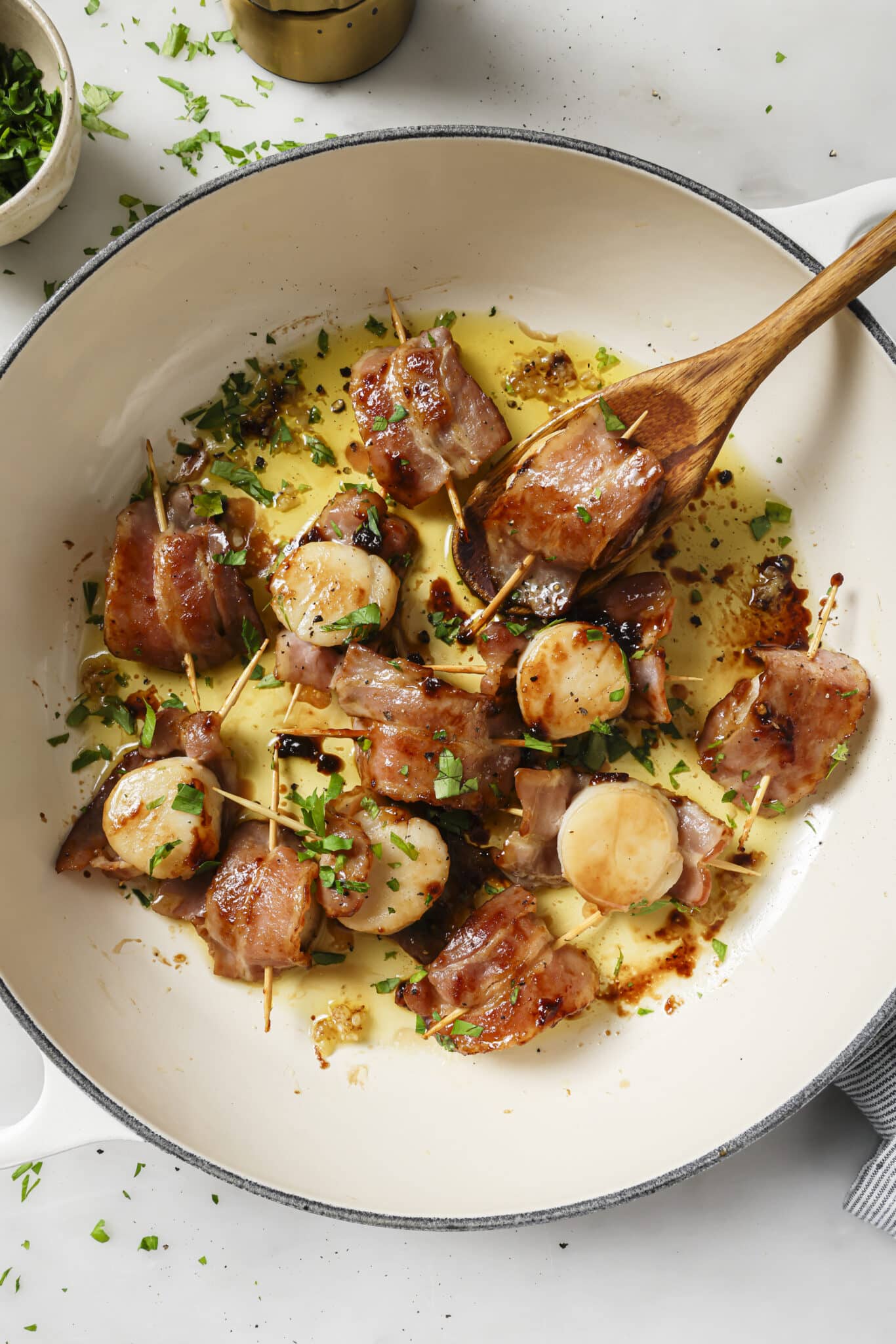
Bacon-wrapped scallops are one of my favorite seafood dishes because the flavors and textures complement each other so well.
The crunchy, smokey bacon with the light, delicate scallops are just perfection! Plus, they may look sophisticated, but they’re actually quite easy to make.
These bacon wrapped scallops require just a handful of ingredients and take less than 10 minutes to cook.
How To Make Bacon Wrapped Scallops
Ingredients
- Bacon — You’ll need about 6 slices of your preferred bacon.
- Sea scallops —Fresh scallops are best if you have access to them, but frozen scallops will also work just fine. You’ll want to slowly thaw frozen scallops in the fridge overnight and pat them dry on all sides before cooking.
- Olive oil — I prefer extra virgin olive oil.
- Butter — Since the recipe already has salt, I recommend using unsalted butter.
- Garlic — You can mince fresh cloves or use pre-minced garlic to save time.
- Parsley — A garnish of fresh parsley adds a nice bright note.
- Salt and pepper — Season the scallops with salt and pepper to taste.
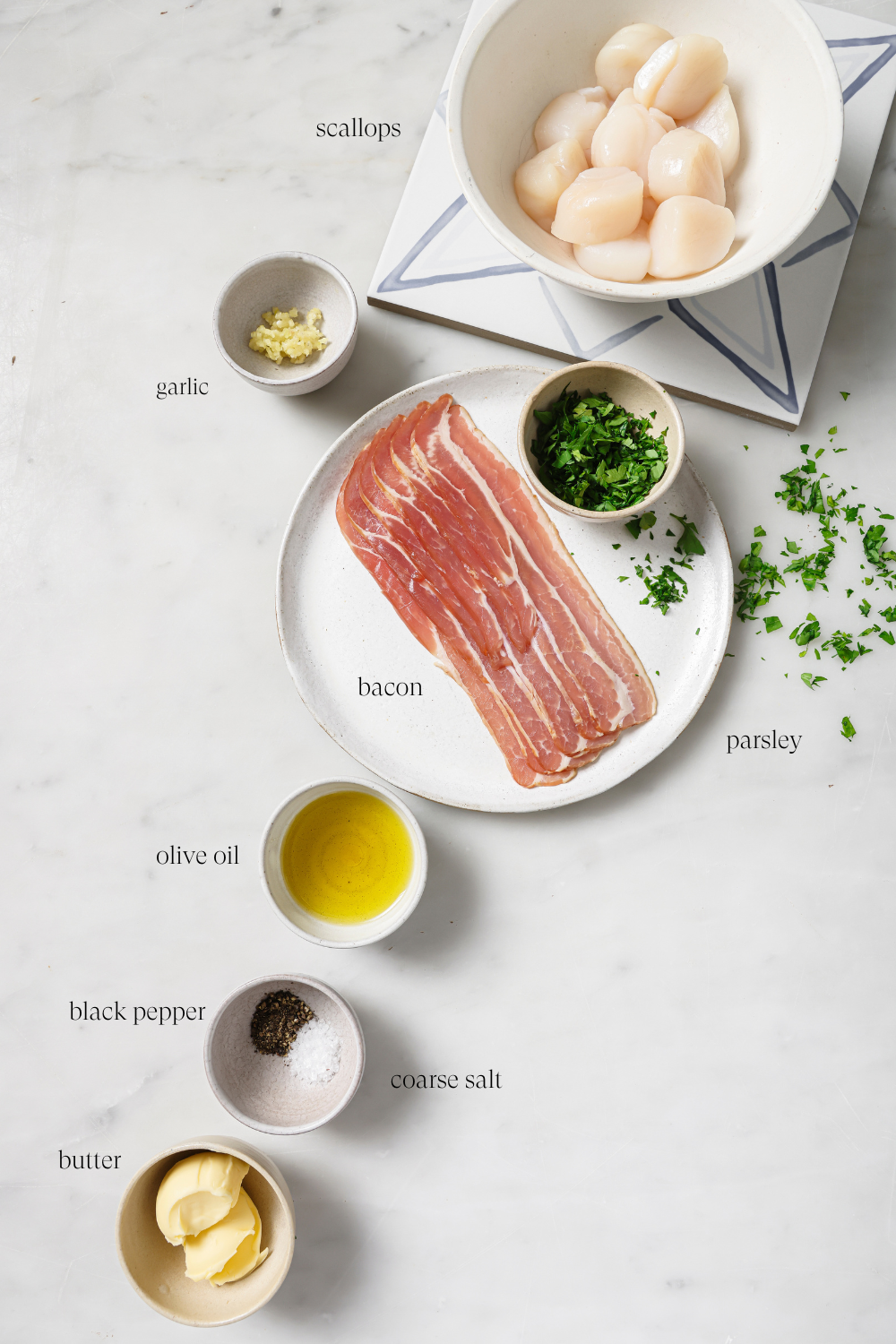
Instructions
Prep the toothpicks and bacon:
- Before you begin, soak short wooden toothpicks in water for 30 minutes to prevent them from burning while cooking.
- Cook the bacon in a skillet for about 3-4 minutes per side until it is slightly cooked but not crispy. It needs to be flexible enough to wrap around the scallops without breaking. Remove the bacon from the skillet and set aside.

Wrap and cook the scallops:
- After you clean the scallops, remove any side muscles, and pat them completely dry with a paper towel. Then, season with salt and pepper to taste.
- Carefully wrap each scallop with a half slice of partially cooked bacon and secure it with a toothpick. Repeat this step until all the scallops are wrapped.
- In a separate large skillet, heat olive oil over medium to medium-low heat.
- Cook the bacon-wrapped scallops for 3-4 minutes per side or until they reach an internal temperature of 120°F.
- Add the butter and garlic to the skillet and cook for 30 seconds to 1 minute, until the garlic is fragrant.
- Note: The scallops and garlic both cook quickly, so it’s important to keep a close eye on them.
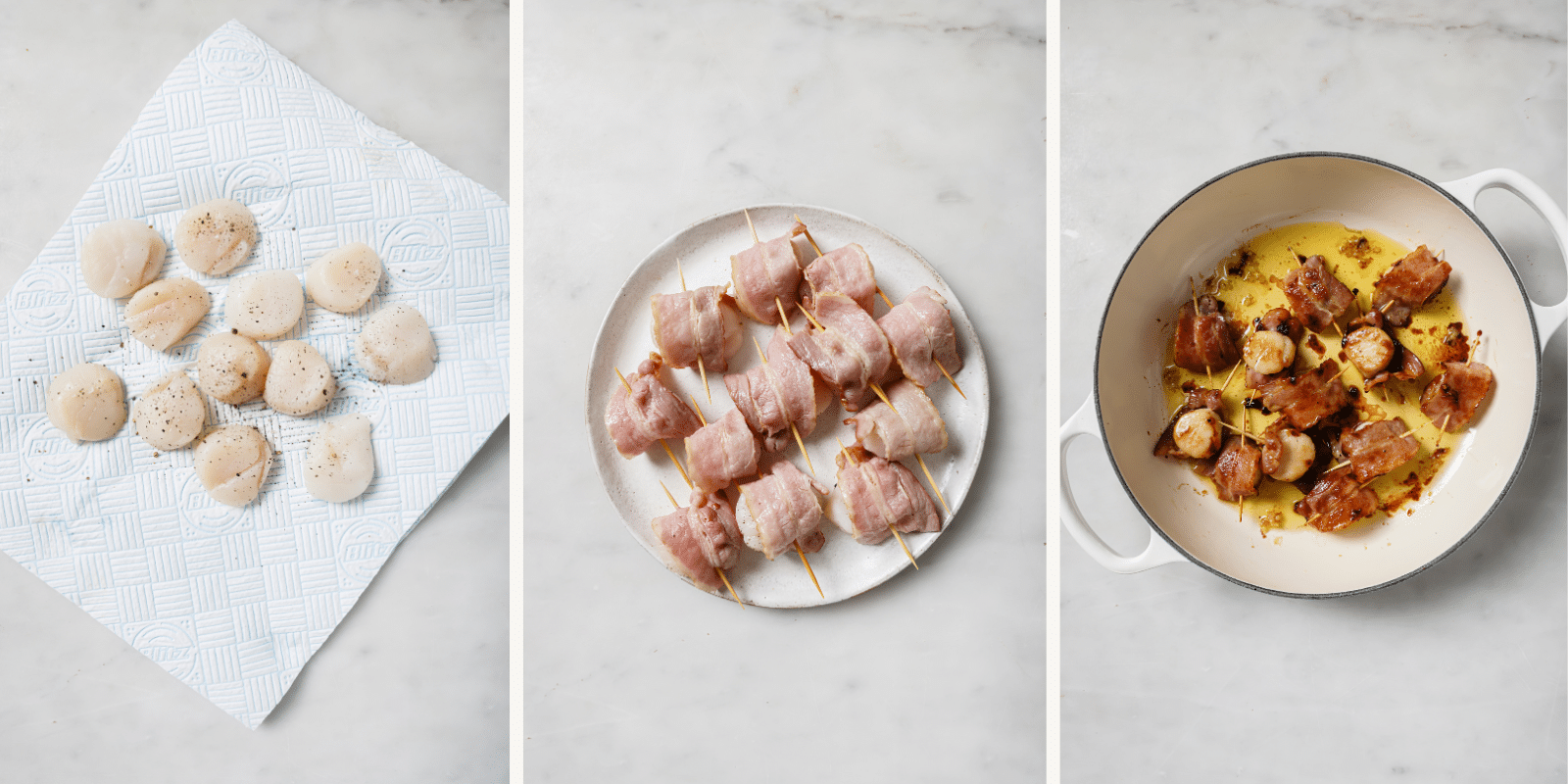
Rest and garnish:
- Remove the scallops from the skillet and let them rest for 5 minutes.
- Use a spoon to drizzle the garlic butter sauce over the scallops.
- Garnish with fresh chopped parsley before serving and enjoy!
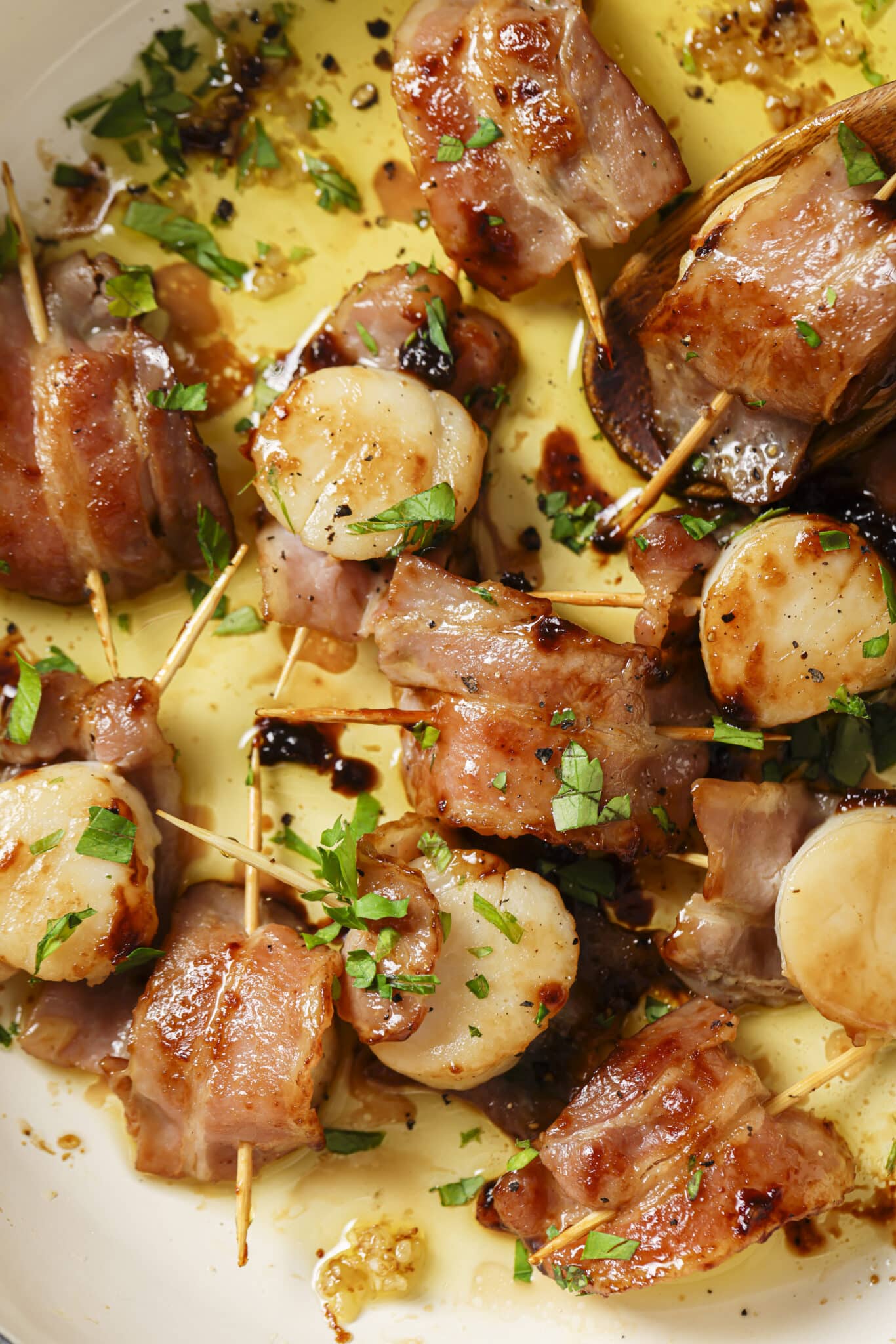
Expert Tips
- Choose scallops that are uniform in size, so they all cook evenly.
- Be sure to pat the scallops completely dry before you cook them. Excess moisture will cause the scallops to steam and have a rubbery texture.
- Use a regular cut of bacon because thick-cut will take too long to cook, and thin-cut may get too crispy.
- Allow plenty of room for the bacon to crisp and the scallops to cook evenly. Work in batches if necessary and be careful not to crowd the pan.
- Scallops cook quickly, so keep a close eye on them to avoid overcooking.
How To Store Leftovers
- To Store: Allow the bacon-wrapped scallops to cool and store them in an airtight container in the fridge for up to 2 days.
- To Reheat: Bacon-wrapped scallops are best enjoyed fresh because the texture won’t be quite as tender when you reheat them. If you do have leftovers, you can gently reheat them on the stovetop over medium-low heat until they’re warmed through.
What To Serve with Bacon Wrapped Scallops
- A fresh salad: One of my favorite ways to enjoy bacon-wrapped scallops is on top of a fresh salad like my simple arugula salad or hearty Brussels sprouts bacon salad.
- Savory rice: For an easy but decadent meal, serve bacon-wrapped scallops alongside savory, fluffy rice or low-carb cauliflower rice.
- A simple side dish: If you’re serving bacon-wrapped shrimp as the main entrée, pair it with a simple, flavorful side dish. A few of my favorites are parmesan green beans, garlic butter sautéed zucchini, and roasted garlic mashed potatoes.
- Appetizers: Create a delicious and stunning appetizer spread with bacon-wrapped scallops, stuffed mushrooms, and cocktail meatballs.
Recipe Variations
- Bacon-wrapped shrimp: If you’re a fan of bacon-wrapped scallops, you’ll love the flavor combination of smokey bacon and savory garlic butter shrimp!
- Fresh herbs: Add a sprig of fresh rosemary or thyme with the garlic butter sauce for more depth of flavor.
- Sweet and smokey: Use maple or brown sugar bacon to add just a touch of sweetness.
- Add some heat: If you prefer scallops with a kick, you can season them with a little chili powder or add crushed red pepper flakes to the garlic butter sauce.
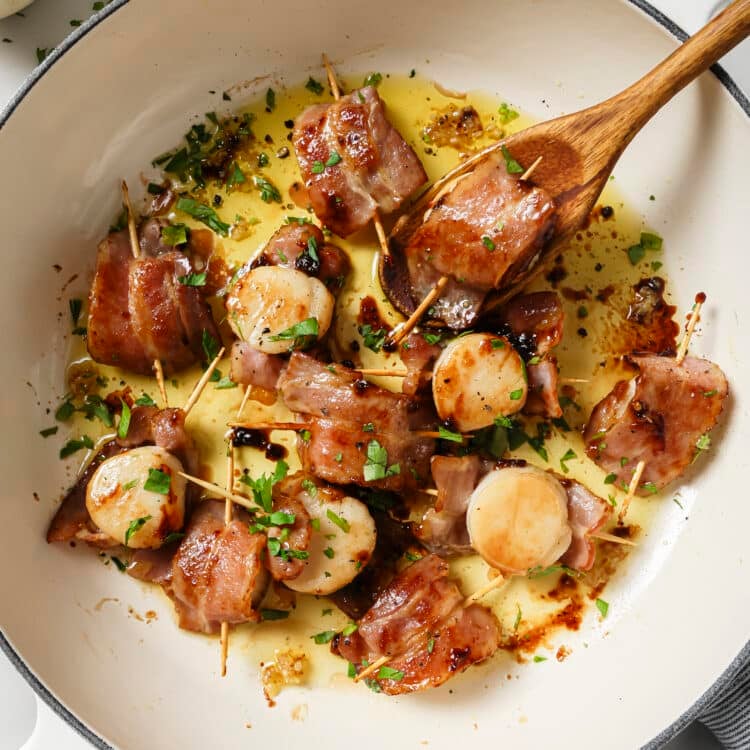
Bacon Wrapped Scallops
Want to Save This Recipe?
Enter your email & I’ll send it to your inbox. Plus, get great new recipes from me every week!
By submitting this form, you consent to receive emails from Primavera Kitchen.
Ingredients
- Toothpicks
- 6 slices bacon
- 12 large sea scallops
- 1 tablespoon olive oil
- 2 tablespoons butter melted
- 1 clove garlic minced
- fresh chopped parsley for garnish
- salt & pepper to taste
Instructions
- Soak short wooden toothpicks in water for 30 minutes to prevent burning while cooking.
- In a skillet, cook the bacon for about 3-4 minutes per side until it’s slightly cooked but not crispy. Set it aside.
- Pat the scallops dry using paper towels and remove any side muscles.
- Season the scallops with salt and pepper to your taste.
- Carefully wrap each scallop with a half slice of partially cooked bacon, securing it with a pre-soaked toothpick. Repeat for all scallops.
- In a separate clean large skillet, heat olive oil over medium to medium-low heat.
- Cook the wrapped scallops for 3-4 minutes per side or until they reach an internal temperature of 125-130°F degrees.
- Add butter and garlic to the skillet, cooking for only 30 seconds to 1 minute. Be cautious not to burn the garlic.
- Remove the scallops from the skillet and let them rest for 5 minutes. Use a spoon to drizzle the garlic butter sauce over the scallops.
- Garnish with freshly chopped parsley before serving.
Tips
- Choose scallops that are uniform in size, so they all cook evenly.
- Pat the scallops completely dry before you cook them, as excess moisture can cause a rubbery texture.
- Use a regular cut of bacon instead of thick or thin-cut because the cook time will be different.
- Allow plenty of room for the scallops to cook evenly and do not crowd the pan.
- Scallops cook quickly, so keep a close eye on them to avoid overcooking.
- To Store: Store leftovers in an airtight container in the fridge for up to 2 days.
- To Reheat: Gently reheat on the stovetop over medium heat until warmed through.
Nutrition Information
Nutrition information is calculated using an ingredient database and should be considered an estimate.
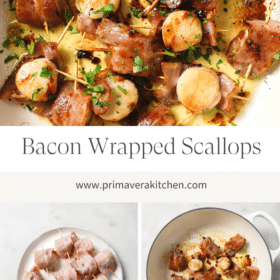
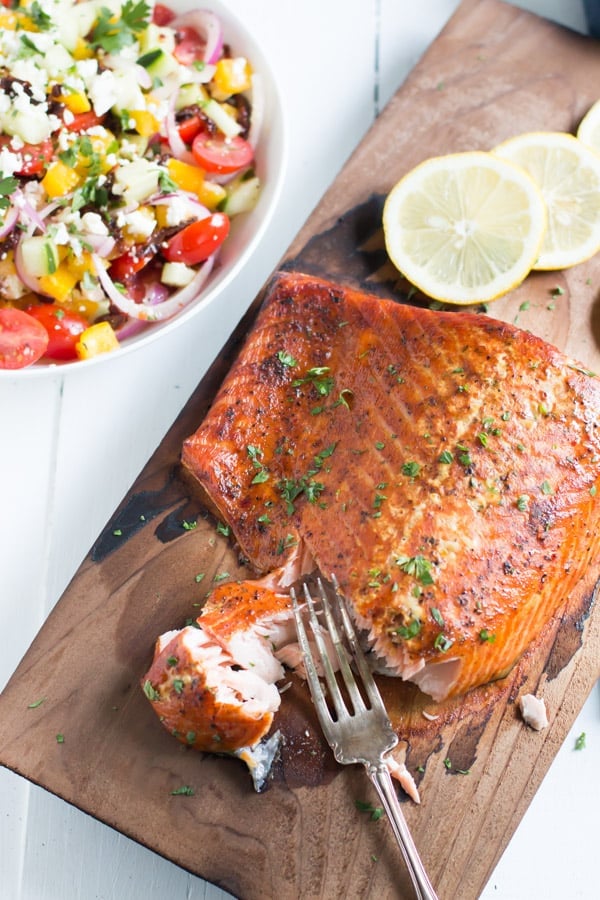
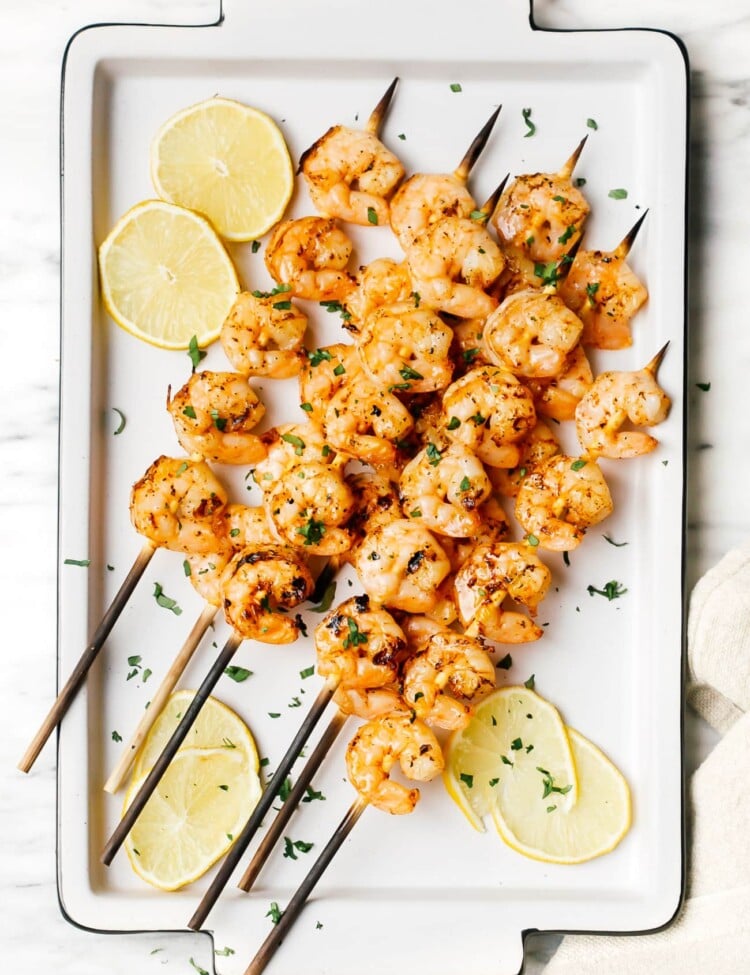
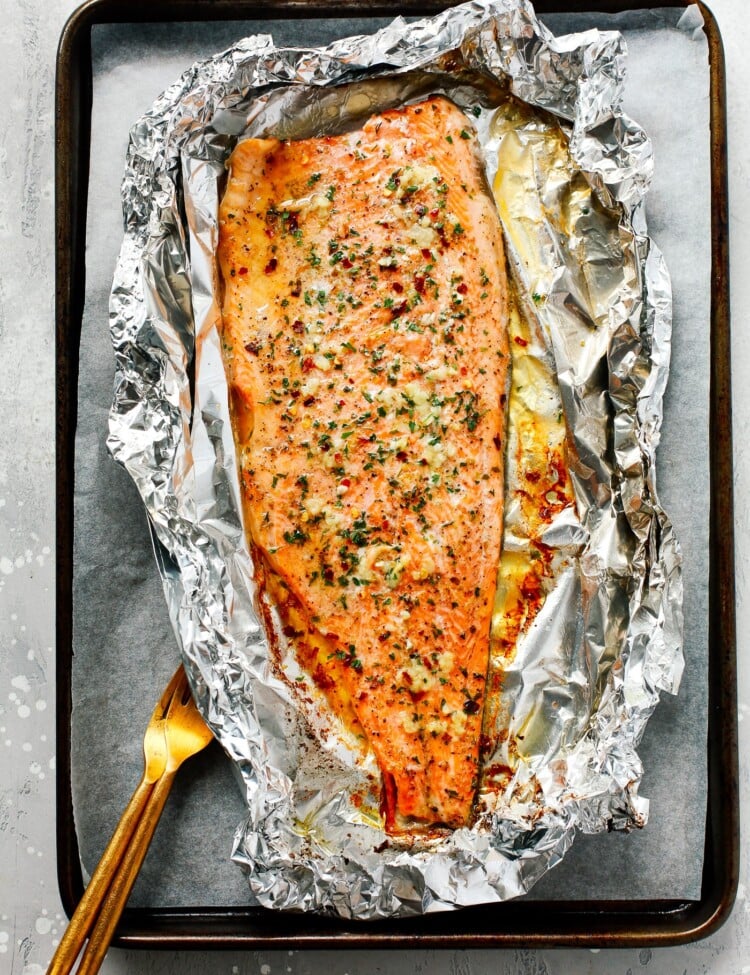
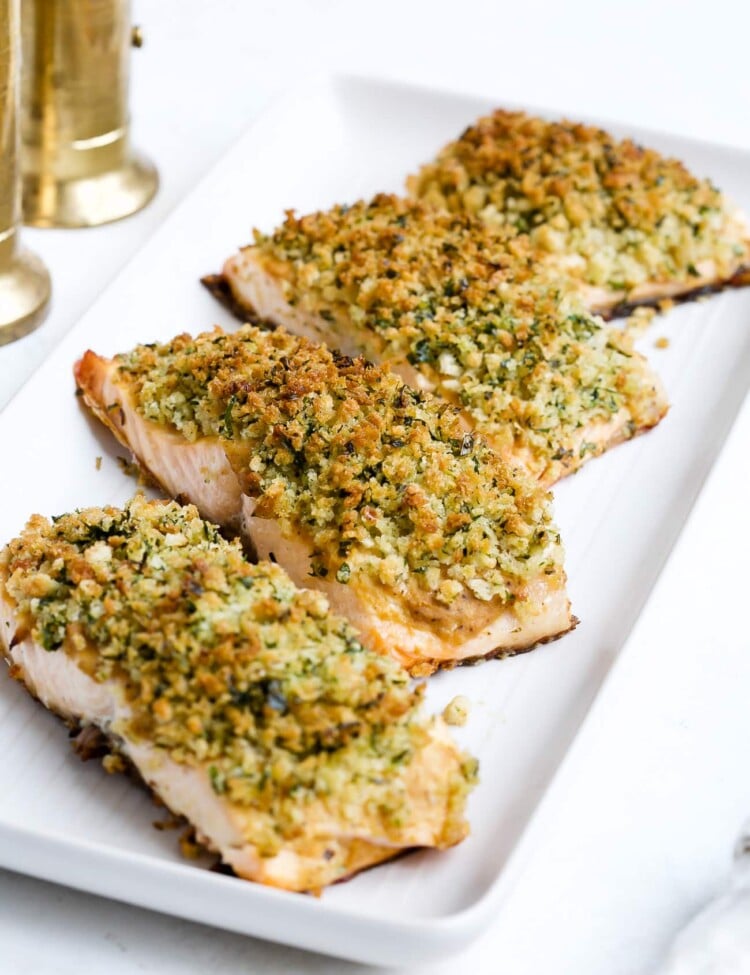
Leave a Comment